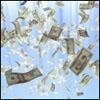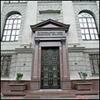Другие материалы рубрики «English»
-
 Human rights groups condemn European Olympic Committees for “sportswashing” human rights abuses in Azerbaijan
Human rights groups condemn European Olympic Committees for “sportswashing” human rights abuses in Azerbaijan
The coalition also condemns EOC President Patrick Hickey for praising the Azerbaijani leader, Ilham Aliyev. -
 Kobryn-based opposition activist Ales Mekh launches presidential bid
Kobryn-based opposition activist Ales Mekh launches presidential bid
Apart from Mr. Mekh, six persons have already announced their intention to run in this year’s presidential election...
- Quarter of adult Belarusians are smokers, official statisticians say
- Experts draw up media reform “roadmap” in framework of Reforum projec
- Leader of Belarusian Popular Front skeptical about new Nyaklyayew-led movement
- Authorities have no plans for liberalization, Belarusian Popular Front leader says
- Second session of pro-independence congress expected to be held in Minsk on June 7
- Rescuers stage massive exercise at sports center in Minsk
- Revelers in Minsk celebrate end of Butter Week
- Leaders of France, Germany, Russia, Ukraine arrive in Minsk for summit on Ukraine crisis
- United Kingdom’s Visa Application Center in Minsk moves into permanent office
- Minsk residents paying tribute to victims of Charlie Hebdo massacre in Paris
English
National Bank head downplays weakening of Belarusian rubel against dollar
 The Belarusian population should take “calmly fluctuations in the rubel’s exchange rate," Pyotr Prakapovich, head of the National Bank of Belarus (NBB), at a meeting with Alyaksandr Lukashenka on Friday.
The Belarusian population should take “calmly fluctuations in the rubel’s exchange rate," Pyotr Prakapovich, head of the National Bank of Belarus (NBB), at a meeting with Alyaksandr Lukashenka on Friday.
“The most important thing is that the Belarusian rubel does not fluctuate against the currency basket,” Mr. Prakapovich said when submitting his new report on the performance of the banking sector. “At the beginning of the year, we promised to keep its fluctuations within a band of plus/minus 10 percent and prevent them from going beyond it. We will fulfill the promise.”
In early 2009, the National Bank devalued the rubel by 20.45 percent and began to peg its exchange rate to the value of a currency basket of the US dollar, the euro and the Russian ruble, declaring an intention to keep the rate within the band against the basket’s “central value.”
“There is every opportunity to strengthen the national currency by the end of the year,” Mr. Prakapovich said. “The population should treat calmly the insignificant fluctuations that are today observed in the currency exchange market.”
On March 25, the US dollar for the first time ever crossed the mark of 3,000 Belarusian rubels, closing at 3,002 at the Belarusian Currency and Stock Exchange. Belarus has the by far highest domestic currency depreciation rate among the post-Soviet states since the USSR’s collapse in 1991.
Mr. Prakapovich said that fluctuations of the currencies comprising the basket were “unfortunately unpredictable,” noting that the euro was projected to gain strength soon.
When commenting on other indicators of the banking sector’s performance, Mr. Prakapovich said that new loans issued to the real sector increased by 29 percent in the first two months of this year compared with the same period of 2009, with the growth target set at 36 to 40 percent. He pledged that the target would be met in the first six months of this year.
The amount of housing loans issued to individuals on easy terms rose by 60 percent compared with the first two months of 2009, Mr. Prakapovich said.
He said that loan interest rates remained “quite high” in January and February, but they were projected to drop gradually. The National Bank issued a recommendation for the country’s banks that they should reduce the rates by July to one time the base refinance rate plus three percent, he noted.




В настоящее время комментариев к этому материалу нет.
Вы можете стать первым, разместив свой комментарий в форме слева